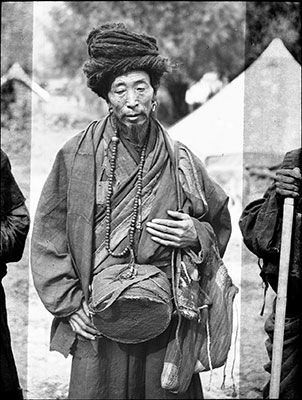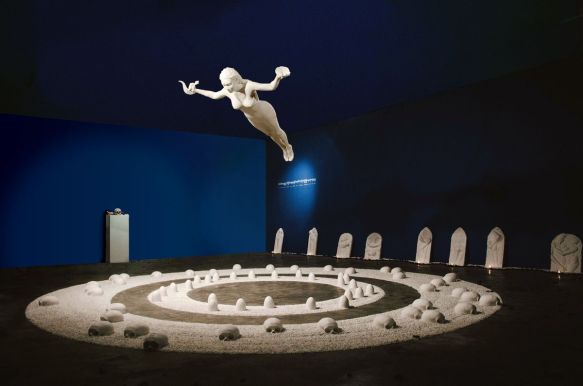
(A photograph of an itinerant Nyingmapa yogi with prominently displayed trengwa or Buddhist prayer beads, one of the central tools of mantra healing, taken in 1936 in Lhasa by British army officer Frederick Spencer Chapman, 1907-1971. Chapman visited the Tibetan capitol between 1936 and 1937, where he served as personal secretary to Basil Gould, the British Raj Political Officer to Sikkim, Bhutan and Tibet. Gould went to Tibet in the hopes of persuading the then 9th Panchen Lama to return to Tibet from China, to where he had fled after the 13th Dalai Lama had clamped down on his power and holding due to political differences)
In the post that follows I offer yet another translation of a chapter from Tibetan tantric yogi and traditional doctor Dr Nida Chenagtsang’s book on Tibetan Mantra Healing (I’ve already provided translations of a number of chapters from this book, called rten ‘brel sngags bcos rig pa in Tibetan, here on my blog – you can find these posts by searching under the tags ‘dr nyida chenaktsang’ and ‘mantra healing’). In this short chapter Dr Nida provides an overview of ‘things to avoid and things to take up’ (spang blang) when doing mantra healing, using a traditional Buddhist turn of phrase which I’ve rendered more colloquially and chattily here as ‘dos and don’ts’. In the sections that follow, Dr Nida outlines suggested everyday behaviour and dietary prohibitions for tantrikas and mantrins and describes common ritual taboos connected with mantra healing practice as well as the optimal times and locations to do different kinds of tantric or mantric rituals.
Central to Dr Nida’s explanations is the concept of ngaki nüpa (sngags kyi nus pa) or ‘mantric/tantric power’ or ‘efficacy’. Anyone can recite the syllables of a mantra, but according to Tibetan cultural understanding there are a number of factors which contribute to whether or not a mantra will actually produce tangible results Continue reading


